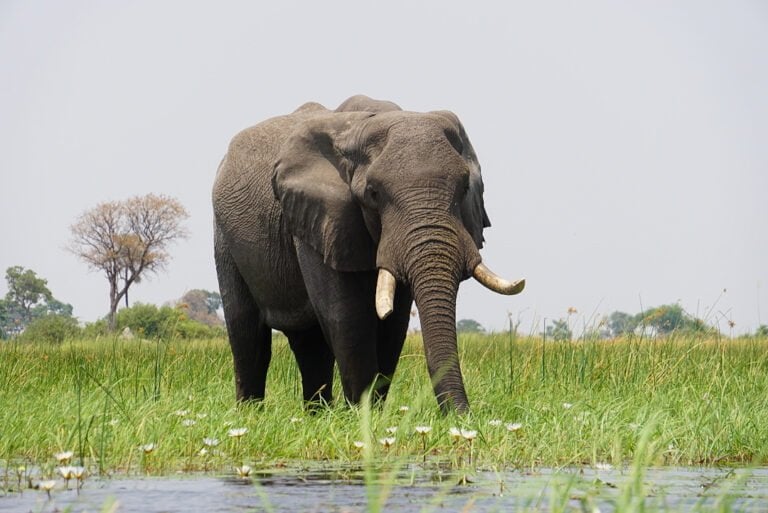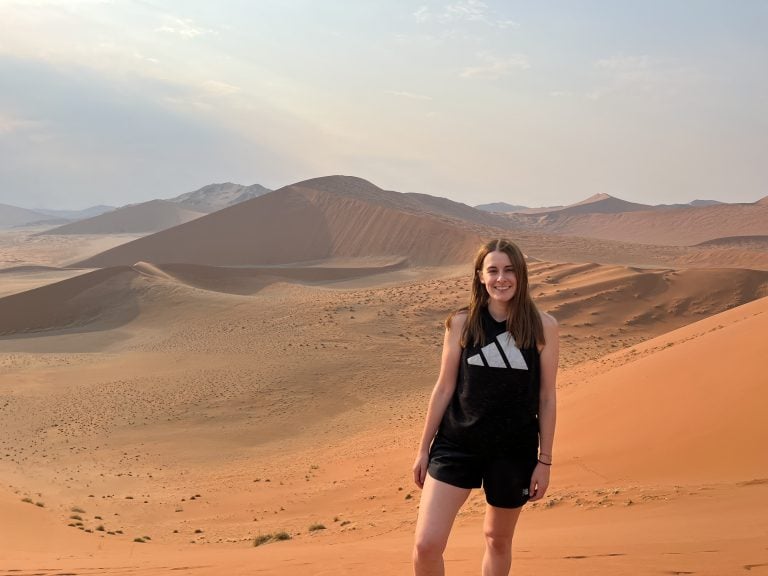A Guide to Spitzkoppe: Where to Stay, Camping and Things to Do
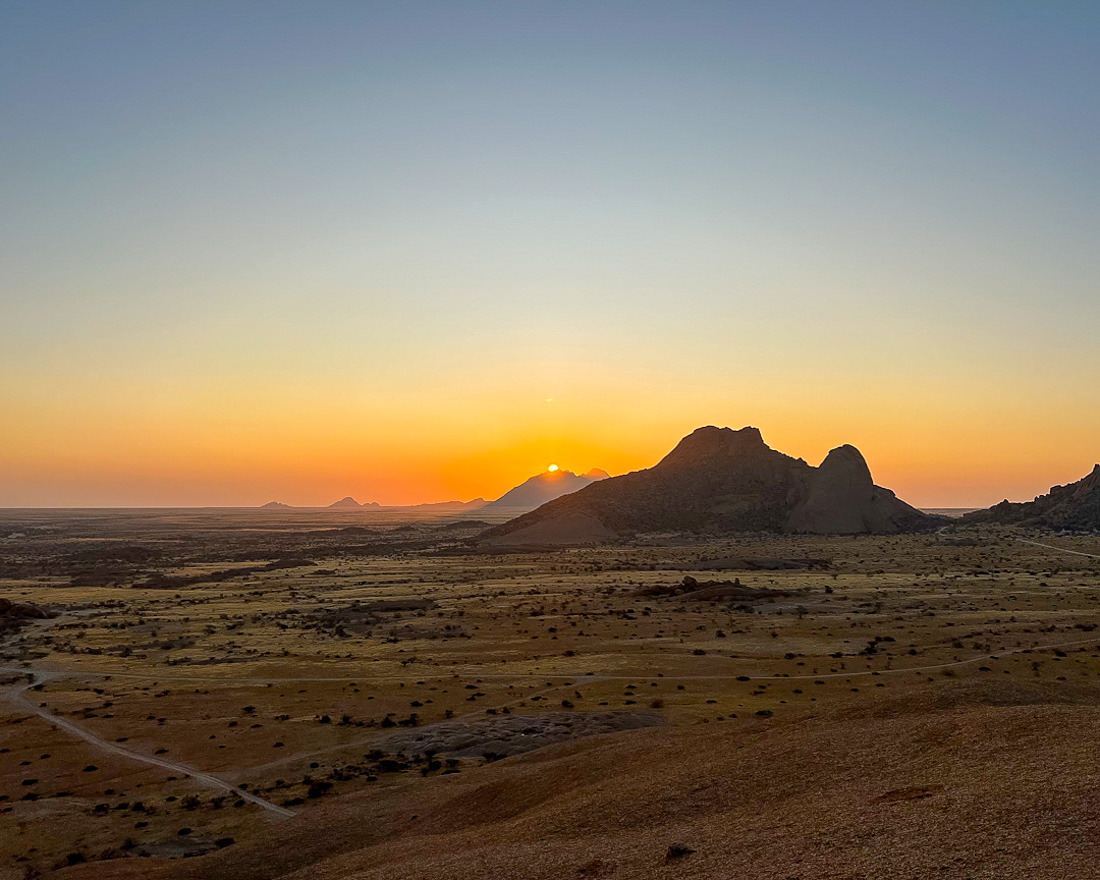
Oh, Spitzkoppe. This spot is a true hidden gem right in the heart of the Namib Desert. I have such fond memories of my short time in Spitzkoppe.
It’s without a doubt one of my favourite parts of my two-month overland journey through Africa. Many visitors often skip Spitzkoppe – it’s a little out of the way and takes some planning to visit. It’s a magnificent spot, and it’s well worth the effort.
In this guide, you’ll find everything you need to know about planning your trip to Spitzkoppe.
Spitzkoppe is known as the ‘Matterhorn of Namibia’. It’s a group of distinctive granite peaks which rise above the Namib Desert. It almost gives off Utah vibes. But there is something so magical and unique about this place.
It feels like you’ve been transported to another planet (in fact, parts of the Space Odyssey movie were filmed here). There are no signs of civilisation. It’s so wild and rugged. When you hike up to the viewpoints, you see the desert for miles around you in all directions. It’s breathtaking.
Spitzkoppe is recognised for its hiking, stargazing and being home to some 4,000-year-old Bushman cave paintings. Be aware, you are entering the true Namib Desert here. There are no modern facilities and you’re in the middle of nowhere. There’s a small town nearby, but it’s advised to avoid this due to safety reasons.
If you’re planning a trip to Namibia, read my guide which includes the best places to visit and a self-drive itinerary for Namibia.

How to visit Spitzkoppe
Spitzkoppe is between Windhoek and Swakopmund in Namibia. It’s about 100 miles (160km) from Swakopmund and 172 miles (277km) from Windhoek. It can be built into a self-driving road trip. Most overland tours including those with G Adventures include an overnight stop here.
To visit this exceptional place by yourself, you’ll need to drive to the area. The gravel and sand roads in Spitzkoppe are not well-maintained so you’ll need a 4×4 vehicle to access the spot. Our 4×4 bus got a flat tire on the way into the park. The roads are very rough.
If you don’t fancy driving, you could look at joining a day tour. There are companies which offer day trips from Swakopmund. There are also overnight tours from Windhoek. To get the most from your Spitzkoppe visit, it’s well worth the overnight stay.


Where to stay in Spitzkoppe
Accommodation options in Spitzkoppe are very limited. People generally opt to go bush camping here (see below for more information).
If that isn’t for you, there are a couple of options, including:
- Spitzkoppen Lodge: This accommodation offers chalets. It’s about a 30-minute walk away from the key attraction,s including the Natural Arch.
- Spitzkoppe Tented Campsites: This is camping, but consists of permanent tents with more facilities than your average tent.
Camping in Spitzkoppe
Camping in Spitzkoppe is a unique and spectacular experience. There are no facilities other than a drop toilet and you’re right in the heart of the desert. This is bush camping at its finest and one of the best places to camp in Namibia.
I stayed at the Spitzkoppe Community Campsite. There was one other group off in the distance, but otherwise, we were the only group there. You’re about a ten-minute walk from all the main sights, so it’s a brilliant spot. There’s more information on the official website.
You’ll need to book your space in advance as it can be busy. It’s a very famous campsite (although when we were there, it was empty). To find a spot, it works on a first come first serve basis. The campsites aren’t assigned so once you check in, you can drive around and choose your campsite.
There are no facilities at the campsite other than drop toilets. There’s no power, flushing toilets or running water. The main reception has supplies, a small restaurant and hot showers, but it’s about a ten-minute drive away from the campsites. My recommendation is to take your food with you and enjoy bush camping for what it is. Make sure you have sufficient drinking water. The desert can get HOT and there is little shade.
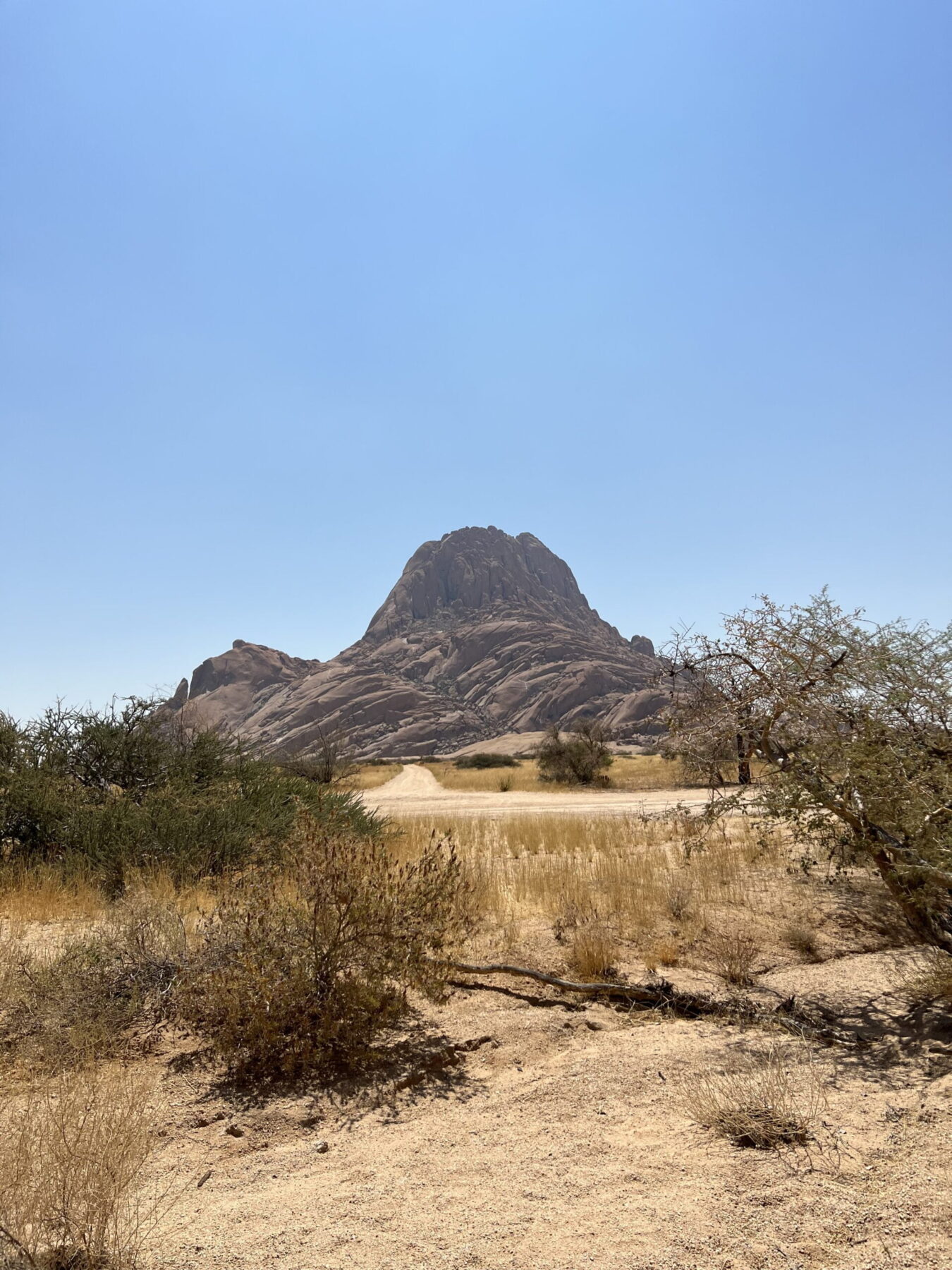
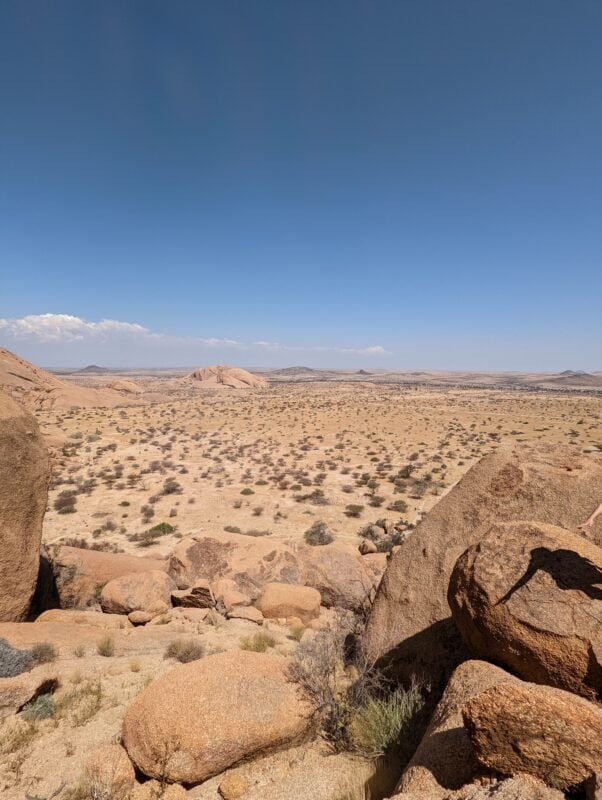
Things to do in Spitzkoppe
Hiking in Spitzkoppe
Hiking is the major draw to Spitzkoppe. It’s a hiking mecca with some incredible and unique routes. There are challenging routes, including the Matterhorn route and the Pontok route. You’ll need to hire a guide to do these. You can contact your campsite or lodge ahead of your arrival to arrange this.
There are also some shorter hikes. They aren’t official as such but there are footpaths you can follow once you arrive at the campsite.
Rock climbing
Spitzkoppe is also a rock climbers paradise. There are around 100 different routes in the area. The rocks are very fragile, so you’ll need a guide for this. The best thing to do is speak to the reception when you arrive or contact one of the above accommodation options in advance.
Explore by yourself
We spent the afternoon exploring the area and attempting to navigate some of the shorter and easier hikes. The area boasts some incredible views, so it’s worth trying to get higher up to make the most of these.
A popular spot is the Rock Arch. This is exactly what it sounds like, a naturally formed arch. It’s a cool spot to explore (especially when it comes to stargazing). I loved spending the afternoon exploring the area.

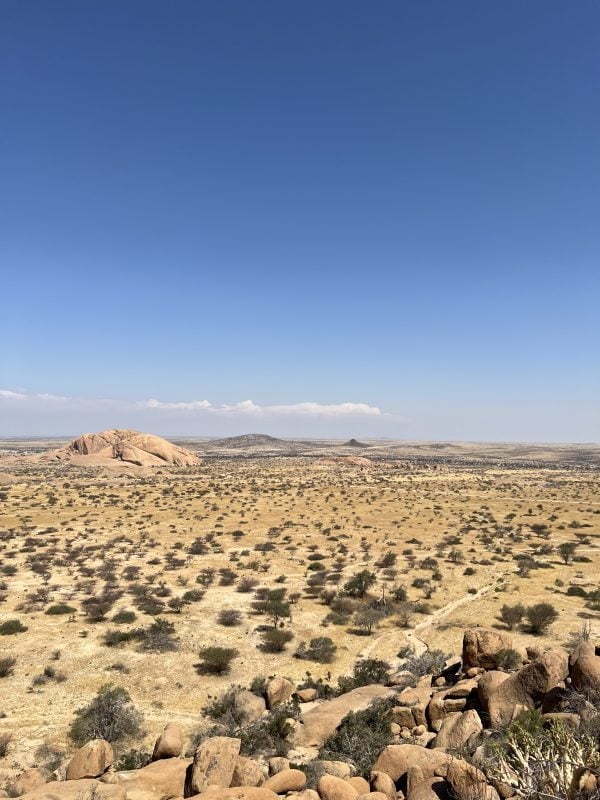
Watch sunrise and sunset
The sunset I witnessed in Spitzkoppe was one of the best I have ever seen. We hiked up to one viewpoint and had a beer as the sun set. It was beautiful. The sunrise was also incredible. Don’t miss witnessing either of these on your trip to Spitzkoppe.
Stargazing in Spitzkoppe
I’ve stargazed in many places around the world. From New Zealand to Utah and the Galapagos, I’ve been fortunate enough to experience some of the most beautiful night skies. Seeing the stars in Spitzkoppe tops them all. It was incredible. You can see the night sky here for what it truly is and it’s wonderful.
I’d suggest heading down to the Arch to stargaze and get some cool photos with the Arch in the background.

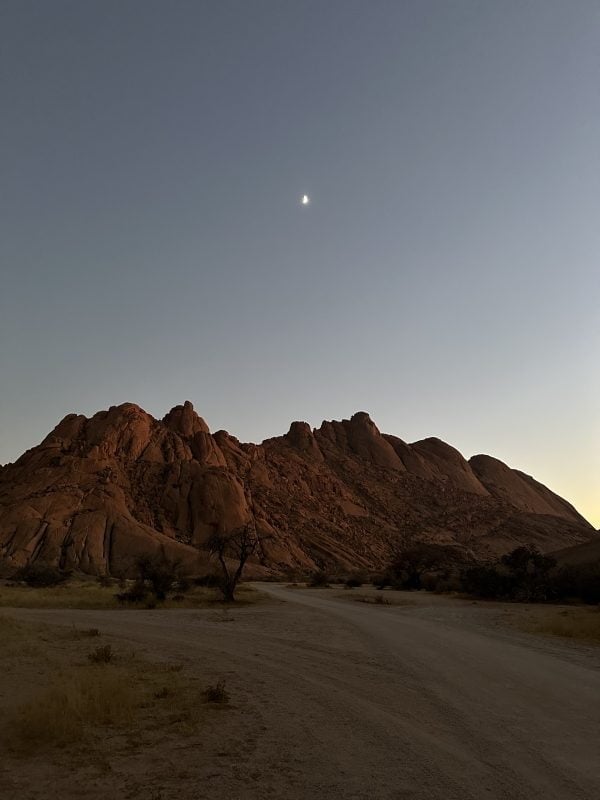
Visit the rock paintings
Spitzkoppe is home to some famous Bushman cave paintings which are thousands of years old. If you want to see these, the best thing to do is to arrange a tour upon your arrival. Your guides can show you where the paintings are and the meaning behind them all. They’re in protected areas and the majority can’t be accessed without a guide.
Find this post on planning a trip to Spitzkoppe useful? Share on social media below.

